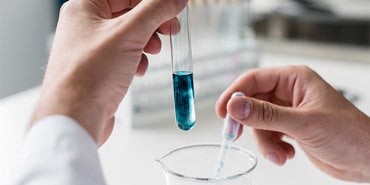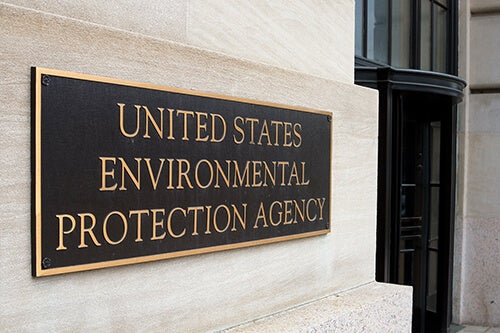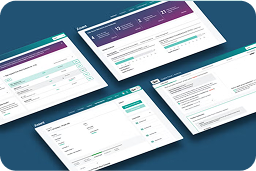Our regulatory subject matter experts are always helping a range of stakeholders solve compelling regulatory challenges associated with supply chain data management. They also provide advice to Assent clients. Here are the top five questions our Regulatory team has responded to over the past few weeks.
Question: Is a Safety Data Sheet (SDS) for one of my products declares 0.0 – 0.1 percent lead in the “Composition” section sufficient to support declarations made under REACH and Proposition 65?
Bruce Jarnot: Because the product in question is an alloy (homogeneous substance), the SDS should be sufficient as supporting documentation for a REACH SVHC declaration, so long as all substances have been reported. However, in the case of Proposition 65, percentage composition is not sufficient to determine exposure during foreseeable use which is the determining factor for if the product would require a warning labeling.
The percentage, if the SDS is representing one material, would be sufficient to determine if REACH SVHC threshold may be triggered for Article 33 requirements. For Proposition 65, the recipient of the SDS would need to determine if their use and the percentage of lead would trigger a warning requirement.
Question: My company has received a REACH Restrictions request for 15 products, each composed of several raw materials. Can we respond to these requests with the latest REACH SVHC and RoHS data, or do we need to campaign for Article 67 data specifically?
Valerie Kuntz: EU REACH Regulation (EC 1907/2006) Article 67 defines the requirements for restricting substances within the EU and EEA. These substances and their conditions are defined under Annex XVII (Annex 17) with ~70 entries covering a large number of substances and substance groups.
Substances restricted under Article 67 and defined under Annex XVII may have started out as an SVHC Candidate substance, then moved to the Authorisation List (Annex XIV/Annex 14) and then later restricted. Others substances may have been added directly to the restricted list because of its high potential for negative impacts.
Meanwhile, EU RoHS only includes six substance groups and four phthalates, some of which are restricted under REACH.
The bottom line is that some substances restricted under REACH are also listed as SVHCs and RoHS substances, but relying on this information alone would not provide all of the data you need to meet your communication requirements due to reporting thresholds, scope, and exemptions.
Read about how Assent’s REACH Solution helps companies acquire data from their supply chain cost-efficiently.
Question: Some of our faucet products are made of brass. In these cases, a minimal amount of lead is used during the manufacturing process. The California Office of Environmental Health Hazard Assessment (OEHHA) lists safe harbor levels for four lead compounds. What are my requirements where these substances are concerned?
Furthermore, many installation guides with Proposition 65 warnings indicate to wash hands after installation. Would that also apply to faucet usage if lead levels are within/below threshold? Is the primary form of exposure considered oral in this case (breathing and ingesting lead particulates)?
Valerie Kuntz: The entry for “lead” on the OEHHA list is applicable to that used in brass alloy.
If lead exposure is below the risk (15 micrograms per day) and no observable effect (0.5 micrograms per day) levels, then the Proposition 65 warning is not required. Companies need to perform an exposure assessment in order to make this determination. The primary routes of exposure are dependent upon the product and its usage.
For example, if the shower faucet handles are made of brass containing lead, then the exposure could be through dermal absorption or ingestion via cross contamination. If the shower head itself is brass in contact with the water, then all routes of exposure would need to be considered.
Warnings to wash hands after installation are often occupational in nature and would not be applicable to consumer use. Only the safe harbor communication to installation companies is required in this case.
Question: My company manufactures a diagnostic test set that is used to simulate flight conditions in order to pinpoint static electricity issues in electrical parts and components for aerospace. We are shipping a unit to China to perform testing on an aircraft, and then shipping the equipment back to the U.S. once complete. Is this unit in scope of RoHS under these conditions?
Raj Takhar: If you are using the unit to perform a service, and the equipment will not remain in China, you are not putting the product on the market, so it would not need to be compliant with China RoHS 2. You may wish to include shipping documentation indicating that the product will not be placed on the market, and the date it will be returning to the country of manufacture.
Question: One of my medical device suppliers provided me with a supplier declaration for raw materials. On it, they reference “Pharmaceuticals and Medical Devices ISO 10993 & USP Biocompatibility” instead of the EU Medical Device Regulation (EU 2017/745). What is the difference between ISO 10993 and EU 2017/745? Does the declaration need to be updated to show “no substances over the limit” and list the directive?
Raj Takhar: The EU Medical Device Regulation (MDR) introduced a complete overhaul of existing medical device regulations by placing new and updated requirements on manufacturers to:
- Implement QMS standards (ISO 13485).
- Implement identification of substances contained within medical devices against referenced substance lists.
- Perform appropriate risk assessments (understand risk exposure scenarios, identify alternative substances, justify the use of a substance > 0.1% w/w threshold).
- Update packaging and labeling information.
You may not use an ISO 10993 declaration instead of an EU MDR declaration. EU MDR is focused on the identification and use of substances, performing risk reviews and justifying the use of a substance. The substances used need to be listed if they are on the suppliers products.
The ISO 10993 analysis is likely to be conducted ‘at a specific point in time’ reflecting the biocompatibility testing. It’s expected that ISO 10993 will be added to the list of harmonized standards being developed for supporting EU MDR substance declarations. ISO 10993 would form part of the analysis and justification for a medical device, but not a replacement for any product substance reporting. In response, you should:
- Complete the EU MDR template, stating if any EU MDR substances appear on the supplied products.
- Ensure your declaration shows both substances on products above threshold, and no substances on products above threshold.
- Attach the ISO 10993 declaration as supporting documentation to the EU MDR declaration, so the customer can evaluate the data to assess risk.
Assent’s regulatory subject matter experts frequently participate in events such as webinars to educate compliance professionals. They also inform our clients’ regulatory programs. To learn more, contact us today.









